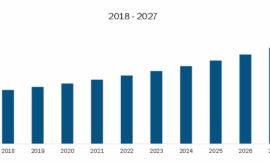When we think about the music industry, the first people who usually come to mind are the famous artists, the lead singers, and the stars. But behind every song, there are many other performers whose contributions often go unnoticed. These performers, known as non-featured performers, play a vital role in creating the music we love. Their work, though not always in the spotlight, is essential to the final product.
Non-featured performers include session musicians and background vocalists, who help build a song but are not credited as the main artist. These individuals may never become household names, but their talent and skills make a significant impact on how music sounds. Understanding their role helps us appreciate the complexity of music production and the importance of fair compensation for all contributors.
Who Are Non-Featured Performers?
Non-featured performers are the individuals who contribute to the music but do not have the lead role in the recording. This group includes musicians who play instruments, such as guitarists, pianists, drummers, and bass players, as well as vocalists who sing background harmonies or provide additional vocal layers.
For example, in a song with a soloist or main vocalist, the background vocalists who harmonize with the lead singer are non-featured performers. Similarly, the musicians who play the rhythm section, like bass players or drummers, are often not recognized as the main artist. These performers are usually hired to help enhance the overall sound of a track but are not typically listed as the primary artist on the album or song credits.
While these artists may not always receive the same recognition as the featured performers, their contribution is just as crucial to the music’s success. They help fill in the gaps, add richness to the sound, and provide the essential elements that make a song memorable.
The Impact of Non-Featured Performers on Music Production
Music production is a collaborative effort. Even though the lead artist may be the face of a song, it is the non-featured performers who help shape its sound and make it come to life. These performers work behind the scenes to create the right atmosphere and feeling for a song, ensuring that every instrument and vocal part complements the others.
For instance, a rock band’s song may feature a lead guitarist who solos throughout the track. But without the drummer maintaining the beat, the bassist laying down the groove, and the background singers adding depth, the song might feel incomplete. Non-featured performers fill in these gaps, making the track sound fuller and more dynamic.
In many cases, these performers work quickly and efficiently, often recording multiple songs in one day. They may be hired for a specific project or brought in by a producer to add a particular sound. Regardless of the setting, their work remains an integral part of the production process.
Why Non-Featured Performers Deserve Recognition
Non-featured performers are not credited in the same way as featured artists, but their role in the music creation process is no less important. Without them, much of the music we hear would be flat and lacking the depth and complexity that make it engaging.
Unfortunately, these performers are sometimes overlooked in terms of recognition and compensation. Many session musicians and background vocalists receive a one-time payment for their work and are not always compensated fairly for the royalties that come from the success of the song. This has been a longstanding issue in the music industry, with many non-featured performers struggling to receive the credit and financial reward they deserve.
Thankfully, organizations like the AFM & SAG-AFTRA Fund have been created to address these concerns. The Fund collects and distributes royalties to non-featured performers, ensuring they receive compensation for their contributions to sound recordings and media. This allows a great deal session musicians and background vocalists to be recognized for their work and helps to provide them with a fair share of the royalties generated by the songs they helped create.
The Role of Technology in Supporting Non-Featured Performers
In recent years, the rise of digital music platforms has changed the way music is consumed and distributed. Satellite radio platforms like Sirius and Pandora and streaming services like Spotify and Apple Music have become major sources of revenue for the music industry, but they have also raised questions about the fairness of the royalty percentages that are split between the labels, digital services and the artists.
This is where organizations like AFM & SAG-AFTRA Fund come in. The Fund is responsible for collecting and distributing royalties, ensuring that all non-featured performers that play on music that is covered by the organization receive compensation. By advocating for non-featured performers, organizations like these are helping to level the playing field and ensure that all contributors to a song or movie score are fairly compensated.
Technology has also made it easier for non-featured performers to keep track of their royalties. Tools like online royalty tracking systems allow performers to monitor how often their music is streamed and ensure that they are receiving their fair share of the revenue. This transparency has made it easier for these performers to claim the royalties they are owed and has empowered them to take more control of their careers.
Why We Need to Value All Performers
The music industry is often viewed through the lens of its most famous artists. However, in most cases we cannot forget that music is a collaborative effort that involves many people working together to create a single piece of music. Non-featured performers may not be the ones in the spotlight, but they are often the ones who help make most all forms of music from pop to classical sound their fullest.
Recognizing and valuing the work of non-featured performers is not only about fairness; it is about understanding the effort and talent that go into creating music. Every performer, whether they are the lead singer or the session guitarist, contributes to the final product. Without their skills and dedication, the music we love would not exist in its current form.
Conclusion
Non-featured performers are the unsung heroes of the music industry. Though they may not always be in the limelight, their contributions are crucial to the creation of music. Session musicians and background vocalists play an essential role in shaping the sound of a song, and their work should be recognized and rewarded. As the industry continues to evolve, it is important that these performers receive fair compensation for their contributions, ensuring that they are not left behind as the music landscape changes. Ultimately, the success of most songs depends on the collaboration of many talented individuals, and non-featured performers are an indispensable part of that team.



